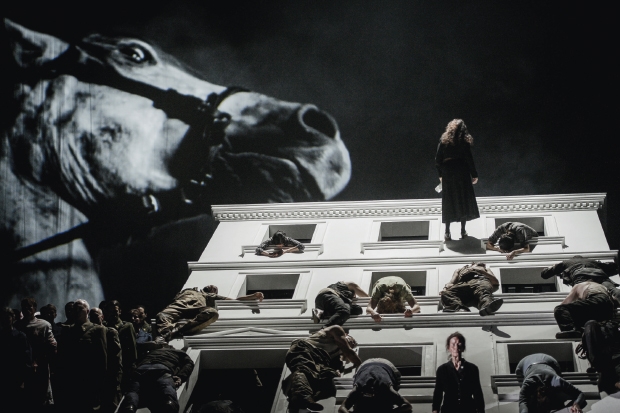The Force of Destiny, ENO’s latest offering to its ‘stakeholders’, as its audiences are now called thanks to Cressida Pollock, the new CEO, is perhaps Verdi’s most interesting failure. It’s an opera with too much fine, even magnificent, music to be neglected, but it doesn’t add up to a satisfactory experience. Even epics, which Force is routinely categorised as, have their limits of accommodation. Henry James described War and Peace as ‘a loose, baggy monster’, but what would he have called Force if he had had the least interest in opera or music? There are times when we are longing for the central story of vengeance and fate to get a move on. The inserted episodes of low life are mainly of inferior quality; I’m thinking especially of Preziosilla, a gypsy but at ENO ‘a soldier’s widow’. Fra Melitone, the grouchy monk who loathes doing charity work, is musically interesting but dramatically null.
And the heroine, yet another agonised Leonora, disappears from the action, retreating into her monastic cell, for most of the opera after Act II. Force doesn’t so much end as peter out, with Leonora strangling herself, and her half-breed lover Alvaro vaguely hoping for redemption. No more adequate than the end of the next opera, Don Carlo, though there we care desperately about the characters and here we never get a chance to really understand them.
Everyone expects Calixto Bieito, the director, to do something horribly colourful, but here he has opted for a black and grey view of the world, mainly black. The set designer Rebecca Ringst has supplied him with a large, fidgety set of house façades, permanently semi-collapsed, blank windows. There are many blown-up photographic projections — of people, especially children, and of an alarming vast horse’s head: they are stirring.








Comments
Join the debate for just £1 a month
Be part of the conversation with other Spectator readers by getting your first three months for £3.
UNLOCK ACCESS Just £1 a monthAlready a subscriber? Log in